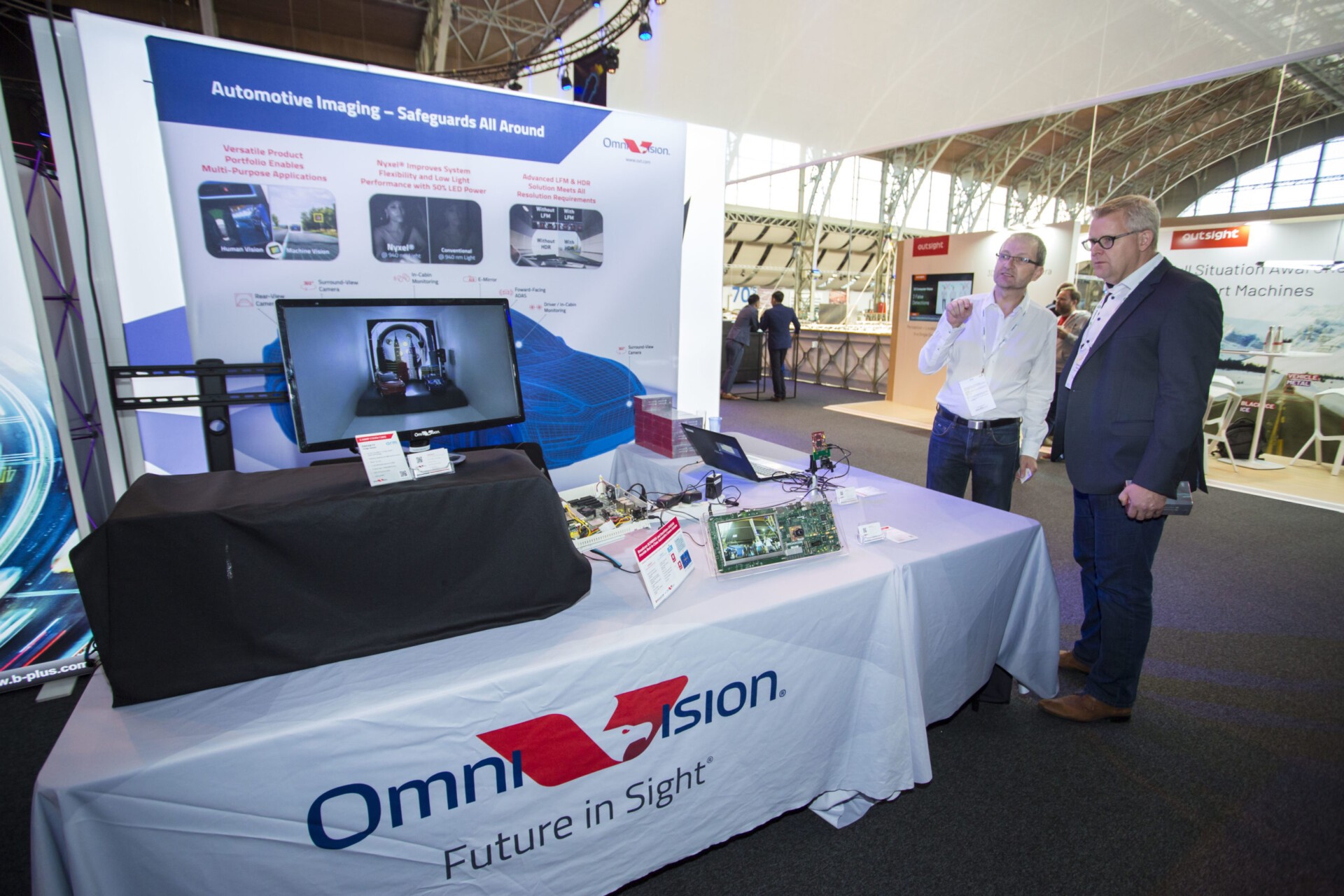Ahead of the much anticipated return to in-person events next month in Brussels, we caught up with Andy Hanvey, Director Automotive Marketing at OmniVision Technologies. Andy shares some great insights into OEM challenges, the biggest opportunities for automotive cameras, in-cabin experiences, the product balance, incorporating cybersecurity and what they’ve been up to the past 2 years.
A firm favourite on the AutoSens agenda and the exhibition floor – one of the leading semiconductor firms, OmniVision Technologies will once again be part of AutoSens and its exciting return to Brussels after two years apart.
It’s always a pleasure to hear from Boyd Fowler (CTO at OmniVision Technologies), on the AutoSens agenda – a true expert among experts. This time he’ll present details of OVT’s High Dynamic Range Backside Illuminated Voltage Mode Global Shutter CIS for in Cabin Monitoring.
Q: As a leading developer of advanced digital imaging solutions, you have a good understanding of the problems automotive OEMs need to solve now, as well as in the future, can you share the top challenge that is expected to occupy OEMs in the coming years?
OmniVision has been working closely alongside the OEMs for over 16 years, helping solve automotive imaging challenges. Overall, the OEMs are look for imaging solutions with the balance of performance, reliability, functional safety, and design flexibility while keeping the cost down. High performance can be achieved by high resolution which enables longer range of detection; LFM delivers more accurate LED capturing; HDR accommodates extreme lighting conditions, and our long automotive pixel design experience ensures superb low light and noise performance at the highest automotive temperature range. Next gen forward looking ADAS will require even higher level of functional safety and with OmniVision’s extensive experience in automotive, all of our sensors are now ASIL B compliant and some are ASIL C qualified. And our flexible ISP/ASIC also provides the OEM designers with multiple CFA and multi-camera design flexibility. Another key challenge which can be seen in different use cases, would be the need to use the camera for more than one use case. For example, a camera which would be used today for SVS, in the future could be used for Machine Vision, current ADAS camera can be used as car DVR or the current IMS & DMS cameras can be merged in one camera for both use cases. This provides challenges throughout the whole image processing chain (sensor, optics, ISP).
Q: What do you see as the biggest opportunities for automotive cameras? How much focus are you placing on in-cabin opportunities compared to exterior sensing?
The biggest growth areas for automotive cameras would be ADAS, SVS, along with DMS (through different legal mandates). OmniVision already has a comprehensive portfolio of exterior sensing solutions and now are we the leader of in-cabin monitoring systems (DMS+IMS). We currently already have a full portfolio of 3µm global shutter sensors and will be showing our next gen 2.2µm pixel at AutoSens (with Nyxel® near infrared imaging technology – with the world’s best NIR imaging QE), which will open new possibilities for in-cabin applications. In addition, we have RGB-IR solutions today and image processing solutions that offers different flexibilities to our OEM designers.
The OAX4000 is a companion image signal processor (ISP) that offers design flexibility for next-generation automotive single- and multi-camera architectures.
The OAX8000 is the world’s first dedicated driver monitoring system (DMS) ASIC with an integrated AI neural processing unit (NPU), image signal processor (ISP) and DDR3 memory.
Q: How do you think that sensors will impact the future of the in-cabin experience?
With our recent discussions with OEMs, we are hearing that the end-users are looking for not only functionalities but also great driver and passenger experience, and sensors are definitely a great way to achieve both. In terms of functionalities, OEMs are looking to be able to personalise different options to better understand the driver and occupants preferences in the car (seat and seat belt adjustments are examples, but can go much further). And in-cabin machine vision can be used for avoiding situations such as leaving children, or valuable items in the car.
From the passenger experience point of view, we are observing that people are spending a large portion of their time in the car commuting and traveling in general, therefore, improving the in-cabin experience is becoming more important than ever, imaging solutions for picture taking, video conferences are examples of features that can improve the in-cabin commute.
Q: We often hear that implementing the right imaging system depends on the use case and requirements, which makes a lot of sense. But as a supplier of imaging technology, how do you balance the need to develop a catalogue of off-the-shelf products with the ever-varying requirements from customers?
This is a very good question. This is where OmniVision can leverage the benefits of the technologies from other segments (i.e. CSP packaging from mobile or Nyxel® technology from security) along with a developing technology that an automotive customer may need (i.e. split pixel HDR). But as you correctly highlighted, it is a balance, between getting the product precise for a specific price point vs over specifying the product. With the deep relationships we have with OEMs and Tier-1s, overall, we are achieving the correct balance.
Q: At the Detroit edition of AutoSens, in May, you presented your OAX4000 ISP. How has the reception of this product been? Will there be any further updates to this product? What features of this image processing are most important to the market?
The OAX4000 has been a very well received product and we can share that it already has a number of design wins. The device is sampling globally and will be in mass production early 2022. The most important features would be the ability to process 4X3Mp sensors, 1X8Mp, multiple CFA support and human viewing and machine vision pipelines.
Q: In Brussels, Boyd Fowler will be presenting a High Dynamic Range Backside Illuminated Voltage Mode Global Shutter CIS for in Cabin Monitoring. Without giving too much away, can you share how your global shutter CMOS image sensors are different to others in the market?
Yes, we do not want to disclose too much from the exciting talk that Boyd will be presenting. Two things to mention are our ability to shrink the pixel further and also applying our industry-leading Nyxel® NIR imaging technology onto the sensor.
Q: In an interview with us last year, it was mentioned that, with AD, there are new features which are non-imaging, such as cybersecurity, which need to be included in the image sensor. Have you made any recent progress with respect to incorporating cybersecurity features?
Yes we have made progress. A number of our latest products include cybersecurity implementation. Observing the trend of high demand for cybersecurity, OmniVision has added cybersecurity into our product design and we are continuously looking for more ways to incorporate cybersecurity features to our products.
Q: What are you looking forward to about being back at AutoSens in-person in Brussels this year?
We look forward to the opportunity of being able to meet face-to-face with long-time colleagues, partners and customers. Two years is a long time to be away from direct contact. We will also be sharing numerous demos in our booth as well as our private VIP meeting room, we look forward to demonstrating what we have been working on this past 2 years in-person.
*******
Join OmniVision at AutoSens in Brussels next month.
The Late Fee on tickets begins on 4 September. Book now risk-free!
Don’t forget – Those working for OEM and Tier 1 companies can attend for free >>








